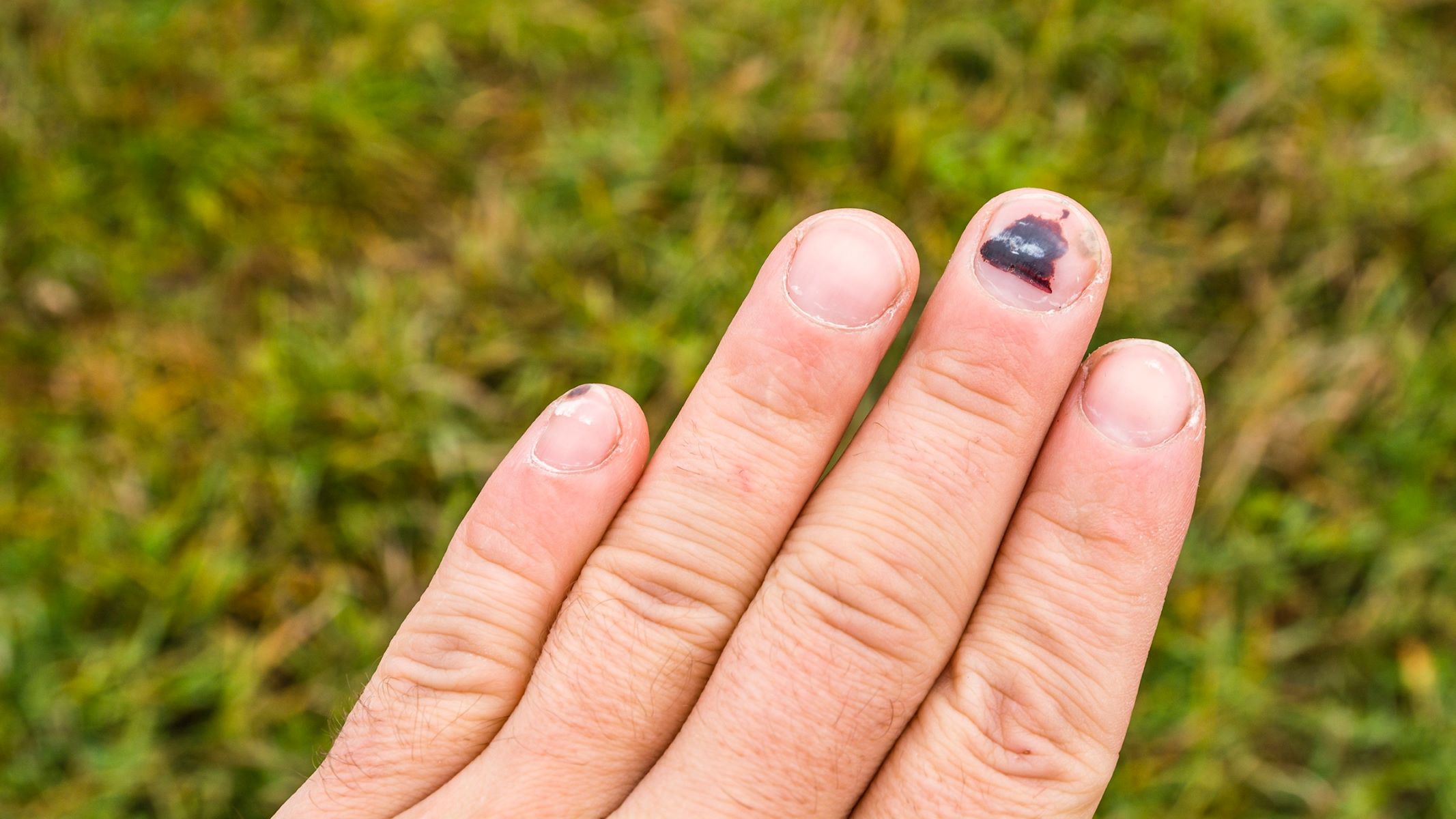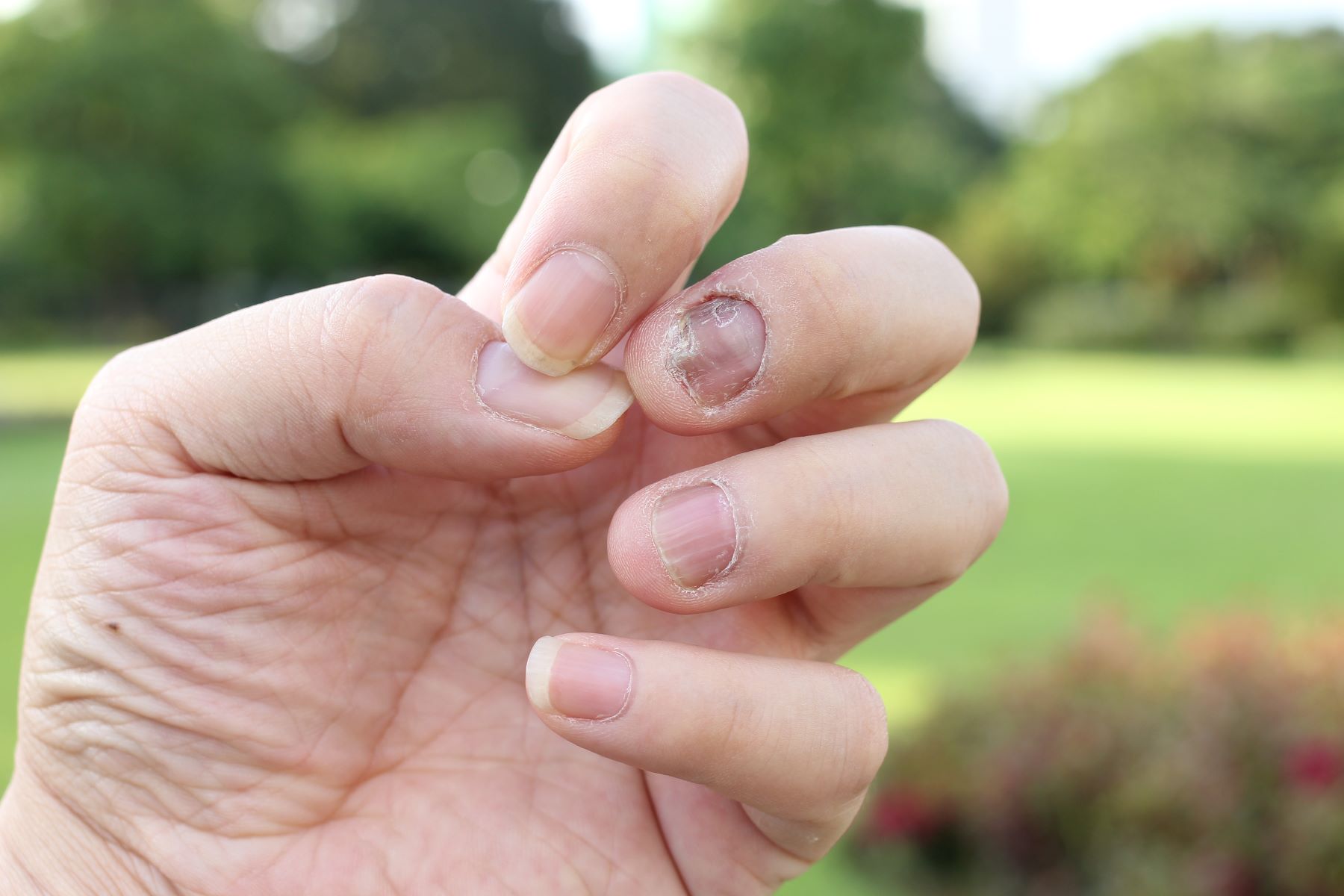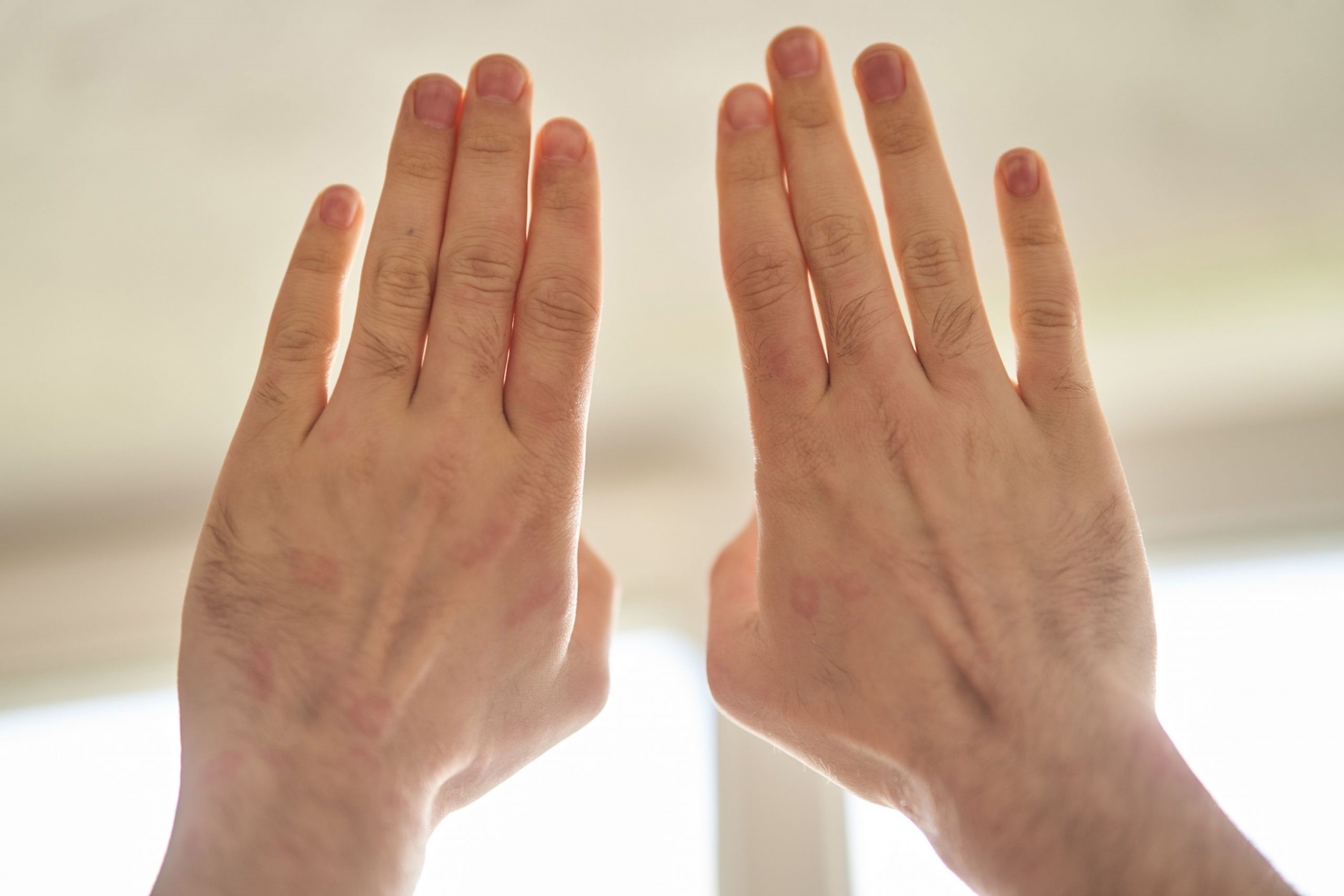Home>Health and Wellness>Understanding The Causes Of Persistent Nail Discoloration And Skin Purpling


Health and Wellness
Understanding The Causes Of Persistent Nail Discoloration And Skin Purpling
Published: February 19, 2024
Learn about the causes of persistent nail discoloration and skin purpling for better health and wellness. Understand the underlying factors and find solutions.
(Many of the links in this article redirect to a specific reviewed product. Your purchase of these products through affiliate links helps to generate commission for Regretless.com, at no extra cost. Learn more)
Table of Contents
Introduction
Nail discoloration and skin purpling are common concerns that can be indicative of underlying health issues. The appearance of nails and skin can offer valuable insights into one's overall well-being, making it essential to understand the potential causes of these manifestations. While occasional changes in nail color and skin pigmentation are normal, persistent discoloration and purpling warrant attention and may necessitate medical evaluation.
Nail discoloration encompasses a spectrum of visual alterations, ranging from yellowing and whitening to the development of dark streaks or spots. On the other hand, skin purpling refers to the bluish or purplish tint that may appear on the skin, particularly in the extremities. These changes can be disconcerting, prompting individuals to seek answers and solutions to alleviate their concerns.
By delving into the underlying causes of persistent nail discoloration and skin purpling, individuals can gain a deeper understanding of the potential health implications associated with these visual changes. It is important to recognize that these manifestations are not merely cosmetic concerns; rather, they can serve as important indicators of systemic health issues that require attention and intervention.
Understanding the multifaceted nature of nail discoloration and skin purpling is crucial for promoting proactive health management. This article aims to shed light on the various factors that can contribute to these manifestations, empowering readers to recognize the significance of these visual cues and take appropriate steps to address any underlying health issues.
Nail Discoloration
Nail discoloration is a common concern that can manifest in various hues, ranging from yellow and white to green, blue, or even black. These changes can occur on the fingernails or toenails, often prompting individuals to seek explanations for these visual alterations. While occasional discoloration may be attributed to external factors such as nail polish or trauma, persistent changes in nail color can signify underlying health issues that warrant attention.
Yellowing of the nails is a prevalent form of discoloration and can be indicative of several underlying causes. Fungal infections, particularly those caused by dermatophytes, can lead to the development of yellow, thickened, and brittle nails. Additionally, chronic conditions such as psoriasis and thyroid disease can contribute to nail yellowing, underscoring the importance of recognizing nail discoloration as a potential indicator of systemic health issues.
In some cases, nails may exhibit a whitish discoloration, often accompanied by a soft or crumbly texture. This presentation, known as leukonychia, can result from trauma, systemic illness, or fungal infections. While minor trauma to the nail matrix can lead to temporary white spots, persistent leukonychia may necessitate further evaluation to rule out underlying health concerns.
Furthermore, the appearance of dark streaks or spots on the nails, particularly in individuals with darker skin tones, can raise concerns about melanoma, a type of skin cancer that can affect the nail unit. While not all cases of nail pigmentation are indicative of malignancy, it is crucial to monitor any changes in nail color and seek medical assessment if concerning alterations persist.
Understanding the potential causes of nail discoloration is essential for promoting proactive health management. By recognizing the significance of these visual cues, individuals can take appropriate measures to address any underlying health issues and seek timely medical intervention when necessary. It is important to approach persistent nail discoloration with attentiveness and to prioritize holistic well-being, acknowledging that these changes can offer valuable insights into one's overall health status.
Skin Purpling
Skin purpling, characterized by the development of a bluish or purplish tint on the skin, can be a visually striking manifestation that warrants attention and understanding. This discoloration is often observed in the extremities, such as the fingers, hands, toes, and feet, and can be indicative of various underlying health conditions.
The appearance of skin purpling is commonly associated with compromised circulation, particularly in the peripheral areas of the body. When blood oxygen levels are reduced, the skin may take on a bluish or purplish hue, signaling a lack of adequate oxygenation in the tissues. This phenomenon, known as cyanosis, can be attributed to a range of factors, including respiratory and cardiovascular issues.
Respiratory conditions such as chronic obstructive pulmonary disease (COPD), pneumonia, or asthma can lead to inadequate oxygen exchange in the lungs, resulting in systemic hypoxemia. As a consequence, the skin may exhibit purpling, reflecting the diminished oxygen saturation in the blood. Similarly, cardiovascular disorders, including congenital heart defects, heart failure, or peripheral artery disease, can impede blood flow to the extremities, contributing to skin purpling.
Furthermore, cold temperatures can exacerbate skin purpling, as vasoconstriction reduces blood flow to the skin, leading to a bluish discoloration in response to the decreased oxygen supply. This cold-induced purpling, often observed in chilly environments or during exposure to cold water, is a physiological response aimed at preserving core body temperature but can also serve as a visual indicator of compromised circulation.
In some cases, skin purpling may be associated with underlying systemic conditions such as Raynaud's disease, a disorder characterized by exaggerated vasoconstriction in response to cold or stress. This heightened vascular reactivity can result in pronounced skin purpling, often accompanied by coldness and numbness in the affected areas.
Understanding the potential causes of skin purpling is crucial for recognizing the significance of this visual manifestation and seeking appropriate medical evaluation when necessary. By acknowledging the implications of skin purpling, individuals can prioritize their health and well-being, addressing any underlying conditions that may contribute to this discoloration. It is important to approach skin purpling with attentiveness and to consider it as a potential indicator of systemic health issues that require attention and intervention.
Causes of Persistent Nail Discoloration
Persistent nail discoloration can be attributed to a myriad of underlying factors, ranging from systemic health conditions to environmental influences. Understanding the potential causes of persistent nail discoloration is essential for recognizing the significance of these visual cues and seeking appropriate medical evaluation when necessary.
One of the primary contributors to persistent nail discoloration is fungal infection, particularly onychomycosis caused by dermatophytes. This common condition can lead to yellowing, thickening, and brittleness of the nails, often affecting both fingernails and toenails. Individuals with compromised immune systems, those who frequently expose their nails to warm and moist environments, and individuals with a history of nail trauma are at an increased risk of developing fungal nail infections.
Chronic health conditions such as psoriasis and thyroid disease can also contribute to persistent nail discoloration. Psoriatic nail changes, characterized by pitting, ridges, and yellowish discoloration, are common in individuals with psoriasis. Similarly, individuals with thyroid disorders may experience nail changes, including yellowing and thickening, as a result of altered nail growth patterns associated with thyroid dysfunction.
Furthermore, the development of dark streaks or spots on the nails, particularly in individuals with darker skin tones, can raise concerns about subungual melanoma, a type of skin cancer that affects the nail unit. While not all cases of nail pigmentation are indicative of malignancy, it is crucial to monitor any changes in nail color and seek medical assessment if concerning alterations persist.
In addition to health-related factors, external influences such as trauma, repetitive friction, and exposure to harsh chemicals can contribute to persistent nail discoloration. Occupational activities that involve frequent nail trauma or prolonged exposure to chemicals can lead to nail discoloration and damage, underscoring the importance of preventive measures and proper nail care.
By recognizing the multifaceted nature of persistent nail discoloration, individuals can take proactive steps to address any underlying health issues and seek timely medical intervention when necessary. It is important to approach persistent nail discoloration with attentiveness and prioritize holistic well-being, acknowledging that these changes can offer valuable insights into one's overall health status.
Causes of Skin Purpling
Skin purpling, characterized by the development of a bluish or purplish tint on the skin, can be a visually striking manifestation that warrants attention and understanding. This discoloration is often observed in the extremities, such as the fingers, hands, toes, and feet, and can be indicative of various underlying health conditions.
The appearance of skin purpling is commonly associated with compromised circulation, particularly in the peripheral areas of the body. When blood oxygen levels are reduced, the skin may take on a bluish or purplish hue, signaling a lack of adequate oxygenation in the tissues. This phenomenon, known as cyanosis, can be attributed to a range of factors, including respiratory and cardiovascular issues.
Respiratory conditions such as chronic obstructive pulmonary disease (COPD), pneumonia, or asthma can lead to inadequate oxygen exchange in the lungs, resulting in systemic hypoxemia. As a consequence, the skin may exhibit purpling, reflecting the diminished oxygen saturation in the blood. Similarly, cardiovascular disorders, including congenital heart defects, heart failure, or peripheral artery disease, can impede blood flow to the extremities, contributing to skin purpling.
Furthermore, cold temperatures can exacerbate skin purpling, as vasoconstriction reduces blood flow to the skin, leading to a bluish discoloration in response to the decreased oxygen supply. This cold-induced purpling, often observed in chilly environments or during exposure to cold water, is a physiological response aimed at preserving core body temperature but can also serve as a visual indicator of compromised circulation.
In some cases, skin purpling may be associated with underlying systemic conditions such as Raynaud's disease, a disorder characterized by exaggerated vasoconstriction in response to cold or stress. This heightened vascular reactivity can result in pronounced skin purpling, often accompanied by coldness and numbness in the affected areas.
Understanding the potential causes of skin purpling is crucial for recognizing the significance of this visual manifestation and seeking appropriate medical evaluation when necessary. By acknowledging the implications of skin purpling, individuals can prioritize their health and well-being, addressing any underlying conditions that may contribute to this discoloration. It is important to approach skin purpling with attentiveness and to consider it as a potential indicator of systemic health issues that require attention and intervention.
Conclusion
In conclusion, persistent nail discoloration and skin purpling are visual manifestations that can offer valuable insights into an individual's overall health. Understanding the potential causes of these changes is crucial for recognizing their significance and taking proactive steps to address any underlying health issues.
Persistent nail discoloration, encompassing a spectrum of visual alterations such as yellowing, whitening, and the development of dark streaks or spots, can be indicative of various underlying factors. Fungal infections, chronic health conditions like psoriasis and thyroid disease, and external influences such as trauma and chemical exposure can contribute to nail discoloration. Additionally, the appearance of dark streaks or spots on the nails may raise concerns about subungual melanoma, emphasizing the importance of monitoring and seeking medical assessment for concerning alterations.
Similarly, skin purpling, characterized by a bluish or purplish tint on the skin, can be indicative of compromised circulation and systemic health conditions. Respiratory issues, cardiovascular disorders, cold temperatures, and underlying systemic conditions such as Raynaud's disease can contribute to skin purpling, reflecting diminished oxygenation and vascular reactivity in the affected areas.
Recognizing the multifaceted nature of these visual cues empowers individuals to prioritize their health and well-being, seeking timely medical evaluation when necessary. By approaching persistent nail discoloration and skin purpling with attentiveness, individuals can address any underlying health issues and take proactive measures to promote holistic well-being.
It is important to emphasize that persistent nail discoloration and skin purpling should not be overlooked as mere cosmetic concerns. Instead, they should be regarded as potential indicators of systemic health issues that require attention and intervention. By acknowledging the significance of these visual manifestations, individuals can advocate for their health, seek appropriate medical care, and work towards maintaining optimal well-being.
In essence, understanding the causes of persistent nail discoloration and skin purpling is instrumental in promoting proactive health management. By recognizing the implications of these visual cues, individuals can take appropriate measures to address any underlying health issues, prioritize holistic well-being, and seek timely medical intervention when necessary.














